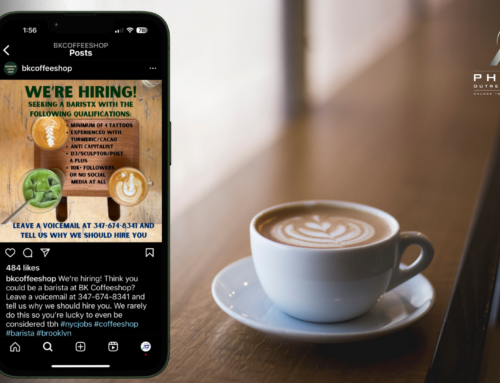In the ever-evolving landscape of workforce development, telling your story effectively is the key to success. Your narrative is what defines your brand, sets you apart, and engages your audience. But why is it so crucial to control your own narrative, and what happens when you don’t?
Let’s delve into the importance of taking charge of your narrative and the potential consequences of leaving it in the hands of others.
You Cannot Not Communicate
It’s a simple truth: you cannot not communicate. Every action, inaction, word, or silence sends a message. Even when you think you’re not actively communicating, your audience is interpreting your brand in one way or another. This is why it’s vital to be proactive in shaping the message you want to convey.
Traditional Media Partners and Narrative Control
Traditional media can be great partners in spreading the word about your workforce development services. They have the reach and influence to bring your message to a broader audience. However, there’s a caveat: when you rely solely on traditional media to tell your story, you are ceding control of your narrative to external forces.
These external forces might not always reflect the message you intend. Journalists may have their own perspectives, and editors might shape your story differently from your initial intent. This can lead to misunderstandings or even misrepresentations of your organization. That’s why it’s crucial to take a proactive stance in controlling your narrative.
The Unavoidable Audience Narrative
Whether you like it or not, your audience will form a narrative about your workforce development brand. It’s a natural human tendency to create stories and meanings based on the information available. If you don’t actively craft your narrative, you leave room for assumptions, misconceptions, or even negative interpretations to take root.
Brands should care about their narrative for several reasons:
- Identity and Differentiation: A well-crafted narrative helps define a brand’s identity, setting it apart from competitors. It allows consumers to connect with the brand on a more personal level.
- Emotional Connection: Narratives have the power to evoke emotions. Brands that create emotional connections with their audience through compelling stories can build loyalty and trust.
- Memorability: People remember stories better than facts or statistics. A strong brand narrative makes the brand more memorable, increasing the likelihood that consumers will recall it when making purchasing decisions.
- Consistency: A narrative provides a framework for consistent messaging across various platforms. Consistency is crucial for building a recognizable and trustworthy brand image.
- Engagement: Compelling narratives capture attention and engage audiences. Brands that tell interesting stories are more likely to attract and maintain the interest of their target audience.
- Influence and Advocacy: A persuasive brand narrative can influence consumer perceptions and behavior. It can also inspire brand advocates who share the brand’s story, contributing to word-of-mouth marketing.
Make Sure It’s the One You Intend
To ensure that the narrative surrounding your brand aligns with your mission and objectives, you must take the reins of your storytelling. Here are some essential steps to consider:
- Strategy Development: Identify your goals, target audiences, and key messages. Understanding these elements will help you craft a narrative that resonates with your audience and achieves your desired outcomes.
- Content Creation: Invest in in-house content creation and video production. By producing your own content, you have full control over how your story is told. This includes videos, blog posts, social media updates, and more.
- Collaboration and Expert Guidance: Consider partnering with experts like Phalanx Outreach Solutions, who specialize in workforce development and communications consultancy. Collaborating with professionals can help you navigate the intricate world of narrative control effectively.
Take Control Today
Controlling your narrative isn’t just about protecting your image; it’s about ensuring that the story you want to tell reaches the right people. By taking control of your narrative, you can shape the way your workforce development brand is perceived and make sure it’s the one you intend.
In the end, remember that silence also sends a message. To make a significant impact in the world of workforce development, take control of your narrative, because your story is a powerful tool for inspiring change and building advocacy within your community.






